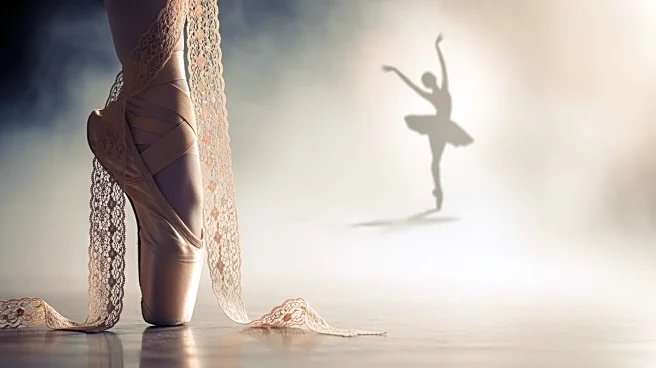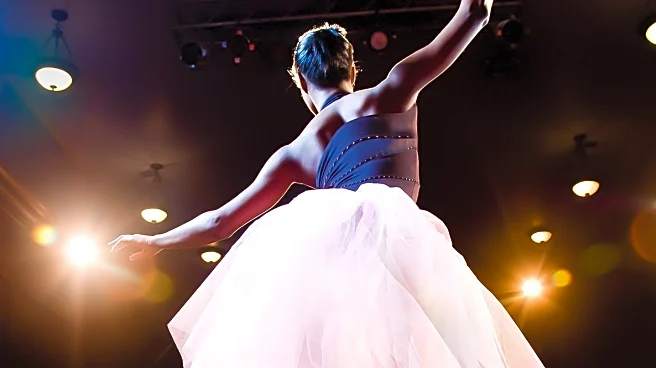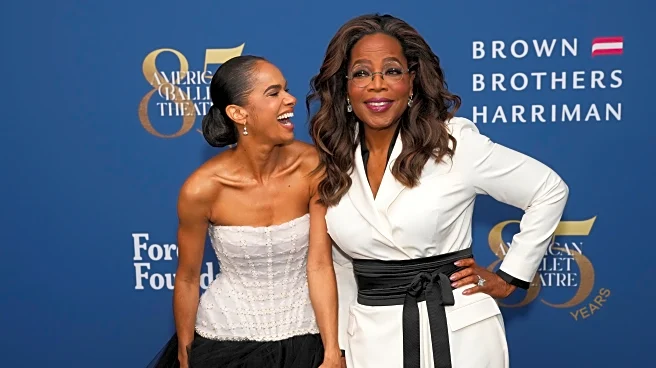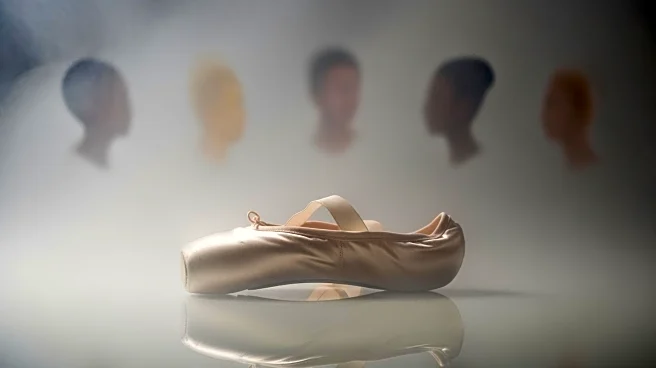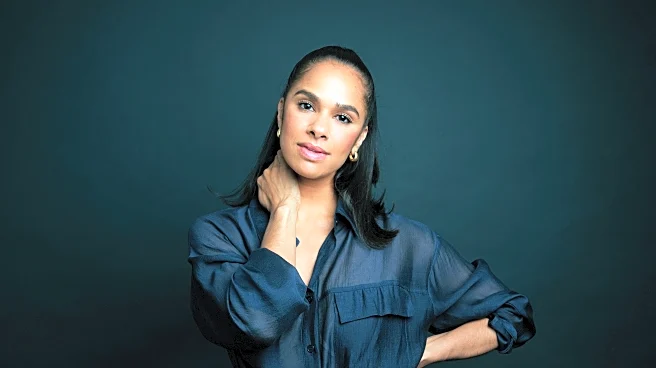What's Happening?
Misty Copeland, the first Black female principal dancer at American Ballet Theatre (ABT), has retired after a groundbreaking career. Her retirement was celebrated at a star-studded gala at Lincoln Center,
where she performed for the first time in five years. Copeland, who joined ABT in 2001 and became a soloist six years later, has been a prominent advocate for diversity in ballet. During her career, she has worked to increase representation in the dance world through her foundation and programs like 'Be Bold,' aimed at young children of color. The gala featured speeches from notable figures like Oprah Winfrey, who praised Copeland for redefining ballet and inspiring young people of color. Copeland's final performance included roles in iconic ballets such as Juliet in 'Romeo and Juliet' and modern pieces like 'Wrecka Stow.'
Why It's Important?
Copeland's retirement marks the end of an era for ABT and highlights ongoing challenges in achieving diversity in ballet. Her career has been a beacon for aspiring dancers of color, demonstrating that barriers can be broken in traditionally exclusive art forms. The absence of a Black female principal dancer at ABT following her departure underscores the need for continued efforts in diversity, equity, and inclusion within the arts. Copeland's influence extends beyond the stage, as she continues to advocate for change through her foundation and public engagements. Her retirement may inspire other institutions to prioritize diversity and representation, ensuring that ballet becomes more inclusive for future generations.
What's Next?
Although Copeland is retiring from ABT, she has expressed her intention to continue dancing and promoting diversity in the arts. Her foundation will likely play a significant role in shaping the future of ballet, focusing on programs that support young dancers of color. The gala's live streaming to the public reflects Copeland's unique fame and her commitment to making ballet accessible to wider audiences. As she transitions to new roles, Copeland's influence may lead to increased pressure on ballet companies to diversify their ranks and address representation issues. Her ongoing work in diversity, equity, and inclusion will be crucial in driving cultural shifts within the dance community.
Beyond the Headlines
Copeland's retirement comes at a time when diversity, equity, and inclusion efforts face significant challenges. Her career has highlighted the importance of visual representation in inspiring change, but also the limitations of such efforts without systemic support. The gala's celebration of Copeland's achievements serves as a reminder of the progress made and the work still needed to ensure that ballet reflects the diversity of its audiences. Copeland's legacy may encourage other artists to use their platforms to advocate for social change, fostering a more inclusive and equitable arts landscape.



